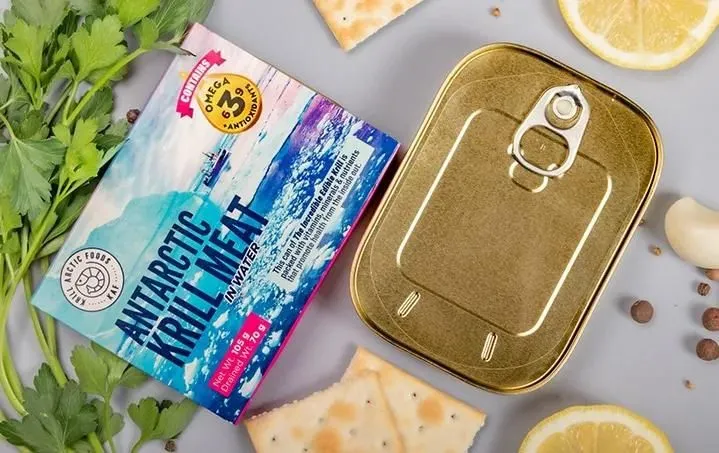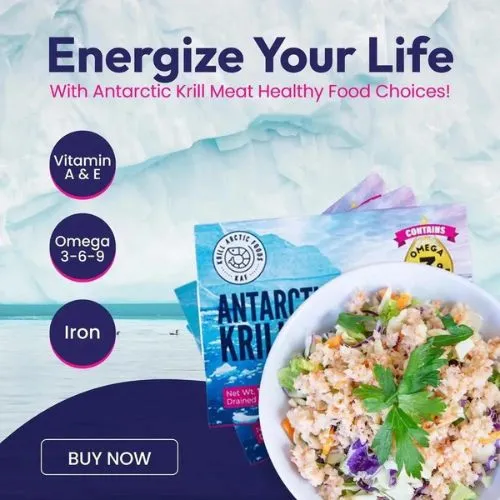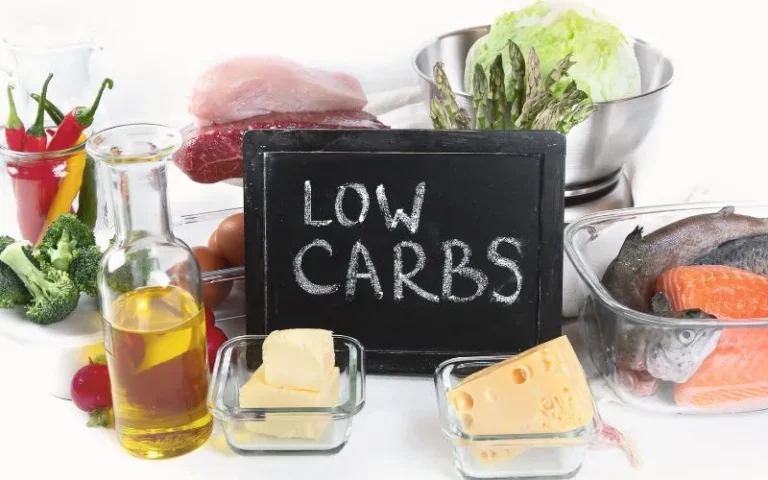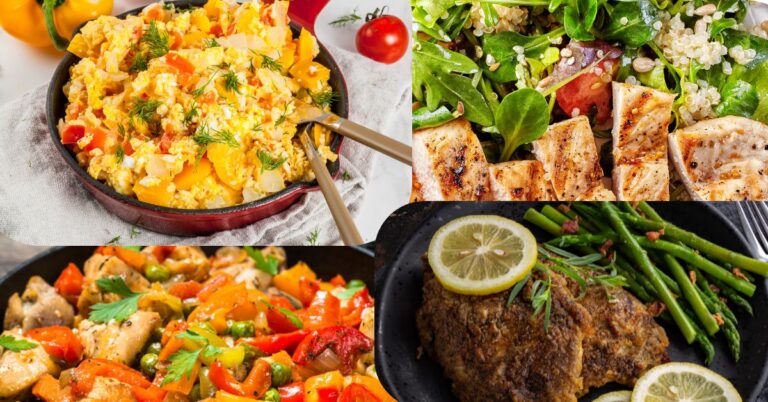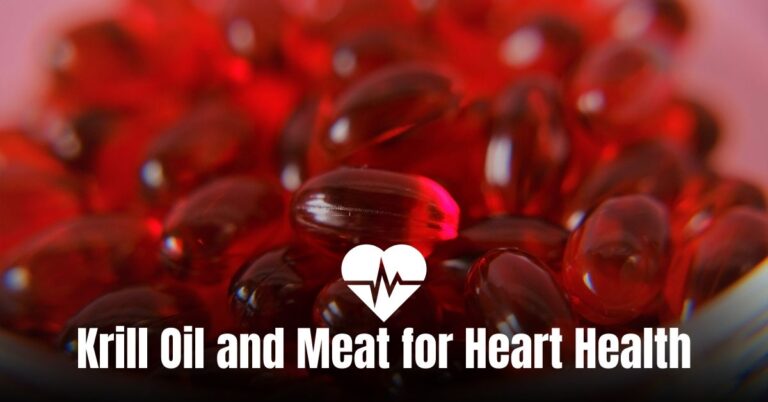After a busy day, dinner becomes more than just a meal—it’s a chance to refuel and set the tone for a restful evening. But finding options that are both satisfying and healthy can be tricky. High-protein, low-fat dinners are a perfect fit: they offer the nutrition your body needs to recover, keep you full without the heaviness, and support your fitness goals.
Not sure where to start with high-protein, low-fat recipes? This guide has you covered with nutritious, easy-to-make meals that deliver on taste and health. Below, you’ll find recipes, smart ingredient choices, and quick tips to make dinner the healthiest (and tastiest) part of your day. Let’s dive in and make healthy dinners a simple part of your routine!
Why High Protein, Low Fat Dinners are Best Choice?
High protein, low fat dinners can transform your health and energy levels. Here’s why they’re worth adding to your routine:
- Builds Muscle and Speeds Recovery: Protein fuels muscle repair and recovery, making these meals ideal for supporting strength and fitness.
- Helps Control Weight: Protein makes you feel full longer, which stops you from wanting to snack, and low-fat foods cut calories, which makes it easier to control your weight without feeling deprived.
- Boosts Metabolism: When you digest protein, your body naturally burns more calories, which can help you reach your fitness goals.
- Protects Heart Health: Eating low-fat meals can help lower your cholesterol, which is good for your heart in the long run.
- Keeps Energy Steady: Since protein is slowly digested, it keeps your energy level steady all night without making you crash.
Incorporating these dinners is a simple, powerful step toward a healthier, more energized you!
Lean Protein Options You Should Know About
Lean protein is an essential part of a healthy diet, supporting muscle building, weight management, and overall well-being. Whether you prefer traditional favorites or want to explore unique options, there’s something for everyone. Below are various high-protein, low-fat options to consider for your meals.
Traditional Favorites
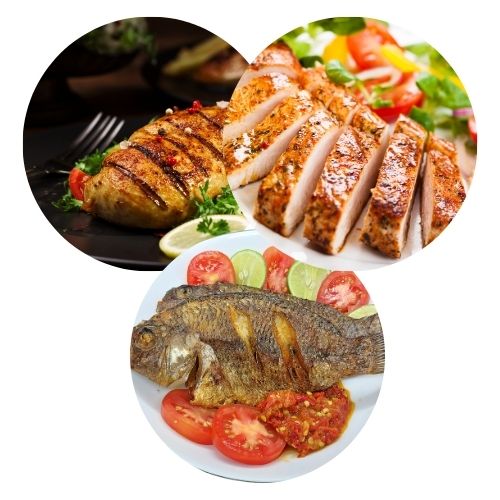
- Chicken Breast: Packed with protein and low in fat, chicken breast is a versatile choice that fits into countless recipes.
- Turkey Breast: Similar to chicken, turkey breast offers a lean source of protein, ideal for sandwiches or roasted dishes.
- Fish: Mild-tasting fish like cod and haddock are excellent sources of lean protein, easy to cook, and low in calories.
Alternatives to Try
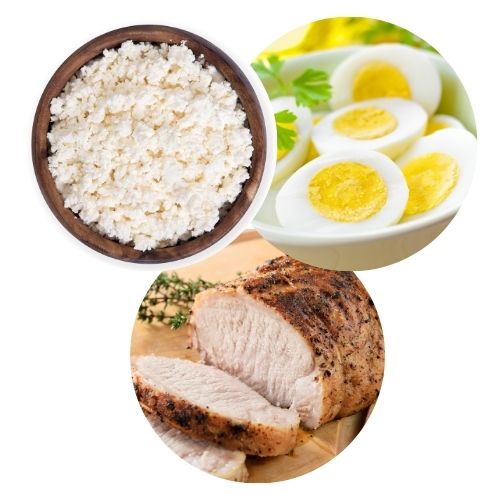
- Cottage Cheese: Creamy and satisfying, cottage cheese is rich in protein while keeping fat content low. Perfect for snacks or added to meals.
- Egg Whites: High in protein and versatile, egg whites can enhance dishes like omelets and smoothies without added fat.
- Pork Tenderloin: Lean cuts of pork provide variety and can be a healthy option when prepared wisely.
A Unique Twist: Krill
Krill offers a fantastic opportunity for those wanting to experiment with their protein sources. These tiny crustaceans are rich in high-quality protein and omega-3 fatty acids, promoting heart health while adding a creative flair to your diet.
Plant-Based Picks: Nature’s Hidden Gems
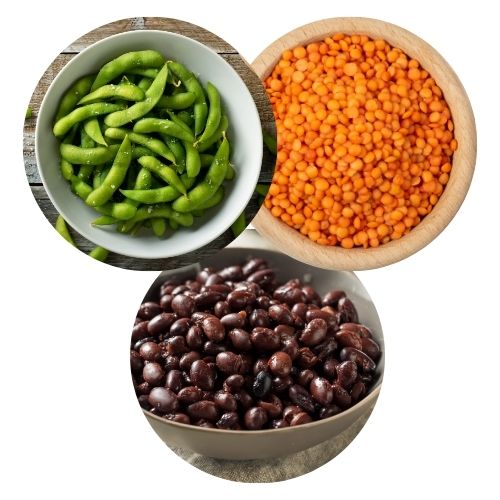
If you’re seeking protein without the fat, look no further than plant-based options:
- Edamame: These green soybeans deliver about 18 grams of protein per cup, making them perfect for snacks or stir-fries.
- Lentils: With 17 grams of protein per cup and abundant fiber, lentils keep you full and can be added to salads, soups, or burgers.
- Black Beans: Offering 15 grams of protein per cup, black beans are a flavorful addition to tacos, stews, or bowls.
Seafood Surprises: Lean and Tasty Shellfish
Seafood is a great source of lean protein.
- Shrimp: Easy to cook with around 20 grams of protein per 3-ounce serving, shrimp is light and delicious with a simple squeeze of lemon.
- Scallops: Tender and sweet, scallops provide about 17 grams of protein per 3-ounce serving and cook in just minutes.
Choices You Might Not Expect: Greek Yogurt as a Savory Star
Greek yogurt isn’t just for breakfast! With 15 to 20 grams of protein per cup, it can enhance savory dishes. Mix it with herbs and lemon juice for a creamy dip, a sauce for grilled chicken, or a dressing for salads.
How to Make a Balanced Dinner Plate
To build a balanced plate, all you have to do is make easy choices that will help you get the nutrients you need while keeping meals healthy and filling.
Half Your Plate with Vegetables
Fill half your plate with colorful vegetables—think broccoli, carrots, bell peppers. These are rich in fiber, keeping you full without extra calories. Plus, eating a variety of colors gives your body the vitamins it needs to thrive.
Pick Lean Proteins
Lean proteins like chicken, fish, beans, or tofu are important for building muscle and staying healthy in general. They keep you full longer and help your body recover without adding unhealthy fats.
Add Whole Grains Mindfully
While you are looking for steady energy, whole grains like quinoa, barley, or brown rice are great choices. Keep them to a quarter of your plate so you get the benefits without overloading on carbs.
Picture this: a plate half-filled with vibrant veggies, a quarter with lean proteins, and a quarter with wholesome grains. That’s balance—nourishing, simple, and delicious!
Easy Recipe Ideas for High Protein, Low Fat Dinners
Want to make dinner quickly and healthily?
Meals that are low in fat and high in protein do not have to be boring or hard to make. With a few simple ingredients and some creative cooking, you can whip up a nutritious dinner that satisfies both your body and taste buds. Here are three easy options to get you started:
Sheet Pan Dinner
Toss a chicken breast with fresh zucchini and bell peppers onto a sheet pan. Add a drizzle of olive oil and a sprinkle of your favorite herbs. Pop it in the oven, and let the magic happen. It’s a one-and-done dish that makes eating healthy almost effortless.
Seafood Night
For a quick and tasty meal, try grilled shrimp with steamed asparagus and a splash of lemon. Shrimp packs a protein punch without adding extra fat, and the citrusy lemon makes it feel bright and fresh—a perfect light meal after a long day.
One-Pot Lentil Stew
You can feel good about eating lentil stew because it is low in calories and fat. Toss in lentils, carrots, celery, and your favorite herbs. The result is a protein-rich, fiber-filled bowl of goodness that feels like a hug on a chilly night. Plus, it’s all done in one pot, which means fewer dishes—always a win!
These recipes are simple, quick, and crafted to keep you full and energized, all while being kind to your waistline. Eating healthy can be easy—and it starts with a balanced, tasty plate!
Cooking Techniques that Keep Fat Low
Cooking tasty meals while keeping fat low doesn’t have to be complicated. With the right techniques, you can enjoy flavorful dishes that are both healthy and light. Here are three simple methods that make a big difference:
Grilling and Broiling
When you grill or broil food, you use high heat, which lets the fat drip off. Let your food “sweat out” the extra fat when you grill it. This will give you a tasty, lean piece of protein. Chicken, fish, and even veggies shine when grilled, all while keeping the added fats at bay.
Steaming
Steaming is a fantastic way to lock in nutrients without adding extra calories. It works great for vegetables and fish, keeping their natural flavors intact while ensuring you get the vitamins you need. Imagine steaming as a gentle hug for your food—it cooks everything evenly and keeps it moist without oils or butter.
Stir-Frying
A little oil is all you need for stir-frying—just enough to keep things moving and stop them from sticking. Using a non-stick pan lets you add even less oil, making this a perfect way to combine proteins and veggies while keeping fats low. The beauty of stir-frying is the speed and the crunch it keeps—keeping both the flavor and texture vibrant.
These cooking methods are perfect for creating meals that are not just good for you but also packed with flavor. By choosing how you cook wisely, you can enjoy dishes that taste rich without the extra calories. Healthy eating is all about balance, and these techniques make it easy to enjoy every bite!
Common Mistakes to Avoid in High Protein, Low Fat Dinners
Making dinners that are high in protein and low in fat can be fun, but if you make a few common mistakes, your meals might not taste as good. Let’s make sure your healthy efforts pay off with food that’s both nutritious and bursting with flavor. Here are three pitfalls to avoid and how to keep every dinner both satisfying and delicious:
Overcooking Protein
Lean meats like chicken or fish can easily end up dry and tough if overcooked—making dinner a chore instead of a delight. Keep it tender by cooking at the right temperature and using a timer. A meat thermometer can be a handy guide—no guessing, just juicy, flavorful bites every time.
Skipping Flavor
Healthy doesn’t have to mean boring! A lot of people forget to add flavor when they’re keeping meals lean. Lean proteins and vegetables can taste bland without seasonings. Picture this: a sprinkle of herbs, a dash of spice, or a burst of lemon can turn a simple dish into something you’d look forward to eating. Don’t be shy with flavors—they make a world of difference.
Relying on Heavy Sauces
When you dress something with a creamy or oily dressing, the fat can sneak in and ruin your efforts. Instead, go for lighter options like yogurt-based or vinegar-based sauces. Imagine swapping a heavy cream sauce for a tangy, herby yogurt blend—it’s still rich in taste but without weighing down your meal.
By avoiding these common pitfalls, you’ll turn your high-protein, low-fat dinners into dishes that are both nutritious and a joy to eat. Healthy eating doesn’t have to be a compromise—it can be a celebration of great taste and smart choices.
Conclusion: Your Path to Nutritious, Flavorful Dinners
Making high-protein, low-fat dinners a regular part of your life is good for your body and your lifestyle in many ways. Keeping up your health and energy levels is important, but eating a balanced diet that keeps you full without adding extra fats is also important. Choose high-quality proteins to make healthy, tasty dinners that are full of nutrients.
Get creative in the kitchen! Try cooking with a variety of protein sources and methods to find flavors that keep you interested in your food. Explore options beyond the typical meats and dairy by trying out plant-based proteins, seafood, or even krill—a nutritious and eco-friendly alternative that’s rich in protein and essential omega-3s.
If you want to try something new, krill could be your next protein source. It is a simple but effective way to get more nutrients while enjoying tasty, fresh foods. Try dinners that are high in protein and low in fat, and enjoy every healthy, filling bite!
FAQ
How can I make a high protein, low fat dinner tasty?
High protein, low fat dinners can be packed with flavor by focusing on herbs, spices, and low-calorie marinades. For lean proteins, like chicken or fish, try seasoning with garlic, paprika, or rosemary to enhance flavor without added fat. Fresh herbs like basil or cilantro, along with a squeeze of lemon or lime, can brighten dishes instantly. Cooking methods like grilling, steaming, and stir-frying at high heat help lock in flavor and create a satisfying texture.
What are some quick high protein, low fat dinner ideas?
For a fast, nutritious meal, try a grilled chicken and vegetable sheet pan dinner, topped with your favorite herbs. A stir-fried shrimp and veggie bowl with a dash of soy sauce and ginger makes for a light but filling option. Another easy dish is a one-pot lentil stew with carrots and celery—perfect for cold nights. These meals are quick to make, keeping you full without the extra fat.
Is Greek yogurt a good addition to high protein dinners?
Yes, Greek yogurt is an excellent addition due to its high protein and low fat content. It can replace heavy sauces or creams to add creaminess without excess fat. Mix it with herbs and lemon for a flavorful dip, or use it as a topping for grilled proteins. With 15-20 grams of protein per cup, Greek yogurt is versatile and adds a delicious, tangy richness to many dishes.
Is krill a good source of protein for dinner?
Absolutely! Krill is a unique, nutrient-rich protein source that’s low in fat and packed with omega-3 fatty acids, supporting heart and brain health. It has a mild, slightly sweet flavor, and works well in a variety of dishes. Consider adding krill to salads, pastas, or stir-fries for a boost of protein and essential nutrients without the extra calories. It’s an eco-friendly option that’s gaining popularity for its nutritional benefits.


